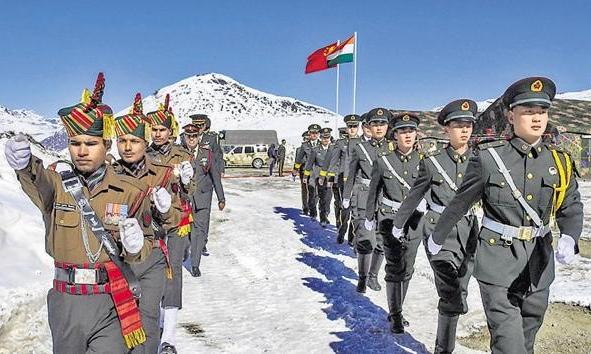Patrolling pact with China implemented on schedule: Government
India and China have implemented last month’s pact on patrolling in Depsang and Demchok along the LAC in eastern Ladakh, following agreed timelines and protocols, the government said on Friday (November 29).
The two sides reached the agreement on disengagement and patrolling in the last two friction points on October 21.
Minister of State for External Affairs Kirti Vardhan Singh said in Lok Sabha that the terms of the disengagement agreements reached prior to the latest pact continued to hold in relevant areas in eastern Ladakh.
“India and China reached agreement on patrolling arrangements along the LAC in India-China border areas in Depsang and Demchok on October 21 leading to disengagement,” he said.
Also Read: India, China discuss next steps in ties after Eastern Ladakh disengagement
Patrolling resumption
“It has been agreed therein that patrolling activities and, wherever applicable, grazing will resume as per longstanding practice before friction started in these areas,” he said.
“The agreement has since been effected and implemented as per modalities and timelines agreed,” Singh added. The minister was replying to a question.
“The terms of the disengagement agreements reached prior to October 21 continue to hold in relevant areas in eastern Ladakh.
“The terms of the agreements apply mutually to both sides and are without prejudice to India’s positions on LAC or boundary lines,” he said.
Also Read: Ladakh: After Demchok, Army patrols Depsang point successfully
‘Trust and reassurance’
Singh said the government continues to keep a constant watch on all developments having a bearing on India’s security and takes all the necessary measures to safeguard its sovereignty and territorial integrity.
Indian and Chinese militaries are carrying out one round of patrolling each in Depsang and Demchok, people familiar with the matter said.
At the same time, they said the two sides have maintained their deployment of troops along the LAC and the focus now will be on deescalation of the overall situation.
Each side currently has around 50,000 to 60,000 troops along the LAC in the region.
After India and China reached the agreement last month, Army Chief Gen Upendra Dwivedi said the Indian military is trying to restore “trust” and both sides will have to “reassure each other” to achieve this objective.
Also Read: India and China made ‘some progress’ in disengagement: Jaishankar
Attempts to mormalise ties
Two days after the pact was sealed, Prime Minister Narendra Modi and Chinese President Xi Jinping held talks in the Russian city of Kazan.
The two leaders endorsed the agreement on patrolling and disengagement and issued directions to revive various bilateral dialogue mechanisms, signalling attempts to normalise ties.
In the nearly 50-minute meeting held on the sidelines of the BRICS summit, Modi underscored the importance of properly handling differences and disputes and not allowing them to disturb peace and tranquility in border areas.
Also Read: Indian, Chinese disengagement along LAC ‘almost complete’: Rajnath
The prime minister said mutual trust, mutual respect and mutual sensitivity should remain the basis of the relations. India has been maintaining that its ties with China cannot be normal unless there is peace in the border areas.
The eastern Ladakh border standoff erupted on May 5, 2020, following a violent clash in the Pangong lake area.
(With agency inputs)


Comments are closed.